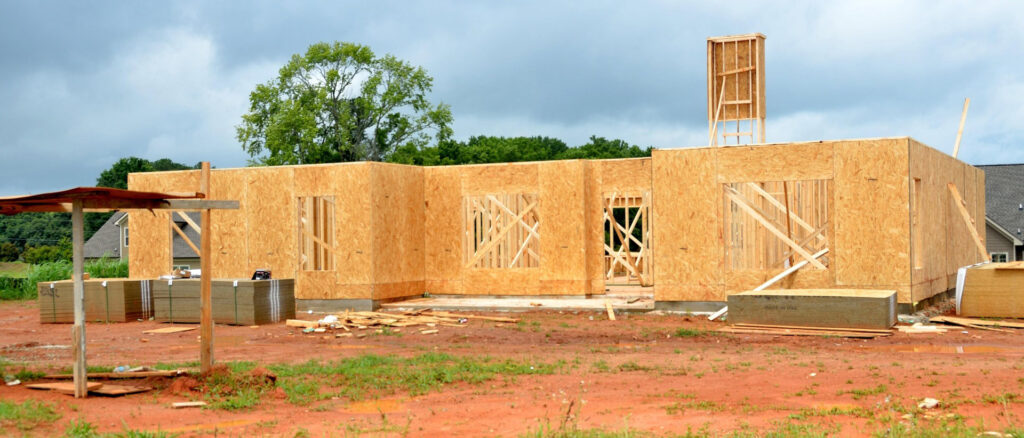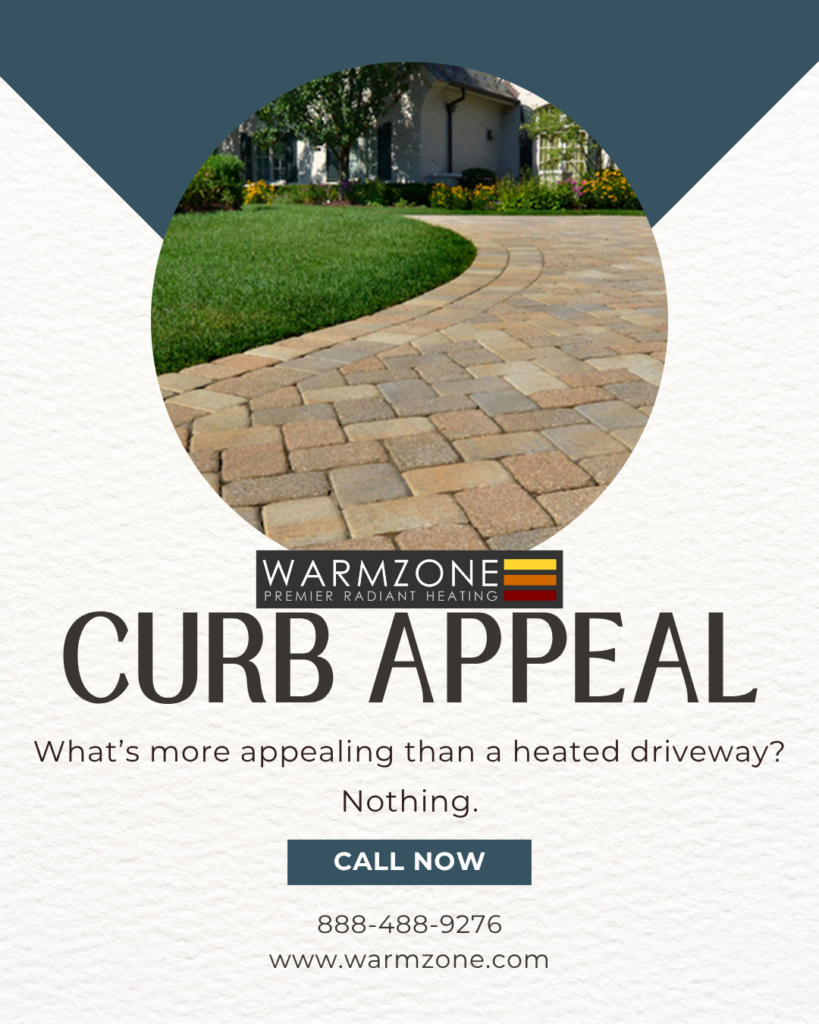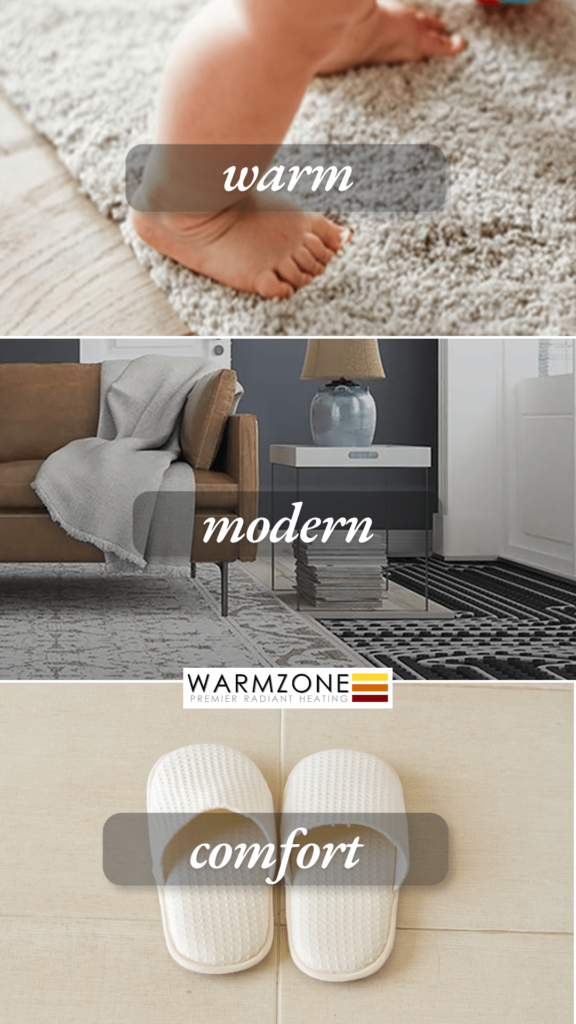When building a new home or pouring a fresh concrete slab, you have a golden opportunity to incorporate luxurious and efficient heating right into your foundation: Warmzone’s In-Slab™ Radiant Floor Heating.

What Is In‑Slab Radiant Heating?
This system embeds rugged electric heating cables directly into your concrete slab—typically 1–2 inches below the surface—turning the entire slab into a radiant heater. The cables generate warmth that the concrete absorbs and distributes evenly throughout the space.
Key Benefits
- Ultra‑Efficient & Quick Response: Heating cables embedded in concrete warm rapidly and evenly. Thanks to thermal mass, once warmed, they hold heat reliably.
- Low Upfront & Installation Ease: In-slab electric systems require no heavy boilers or tubing networks—just durable heat cable laid on your rebar, ready for a concrete pour.
- Durability & Reliability: Built to last with metallic shielding and waterproof sheaths, the cables are UL/CSA compliant, maintenance-free, and backed by a non-prorated 10‑year warranty.
- Energy Savings & Smart Control: Programmable thermostats with in-floor sensors allow you to heat only when needed. Coupled with electric thermal storage (ETS), you can run the system during off-peak hours for added savings.
- Cleaner & Healthier Homes: Radiant heat operates silently and quietly, without allergens or drafts—perfect for allergy-prone families, as there are no air blowers to circulate dust.
Why Choose In‑Slab Over Other Systems?
Electric in-slab systems offer a sweet spot between cost, simplicity, and comfort—ideal for new construction. They install quickly during the concrete pour and integrate seamlessly with a variety of floor coverings. Plus, they deliver consistent, energy-efficient warmth with minimal maintenance.
Applications & Compatibility
Whether you install hardwood, tile, carpet, or polished concrete, the slab evenly transfers heat across a range of floor finishes. It’s especially effective in cold-weather spaces, such as basements, bathrooms, or open-concept living areas.
Why Warmzone?
- Expert support – from system design to installation, training, and troubleshooting.
- High-quality components – rugged, waterproof cable with UL/CSA approvals.
- Advanced controls – programmable thermostats with scheduling and safety features.
- Strong warranties – 10‑year non-prorated coverage for peace of mind.
In Summary
For those laying new concrete floors, Warmzone In-Slab™ Radiant Floor Heating delivers:
- Efficient, even warmth with thermal mass
- Simplified installation and lower costs than hydronic systems
- Durable, low-maintenance components
- Health and comfort benefits
- Smart, programmable control for energy savings
Interested in including this in your next build? Contact us at 888-488-9276 for a complimentary consultation and quote—our radiant heat experts are ready to assist you.









